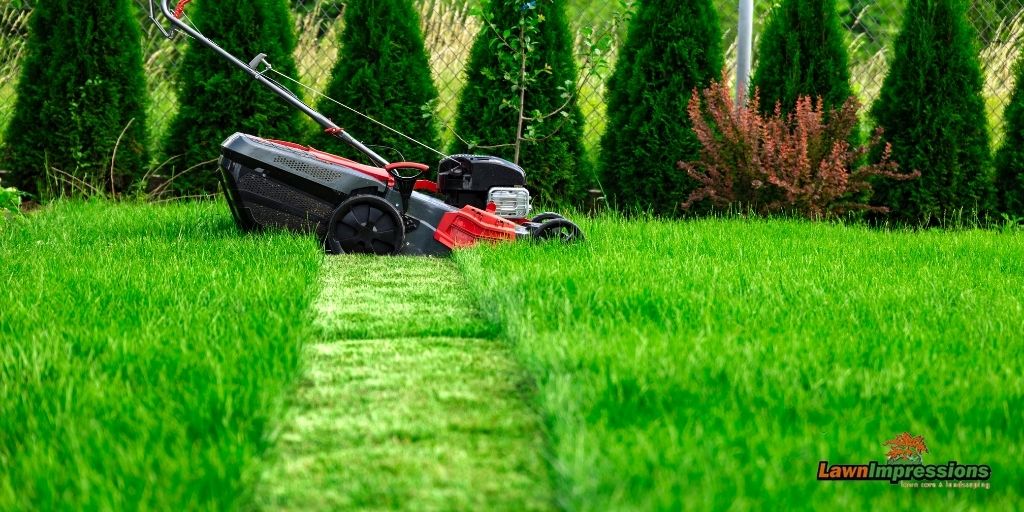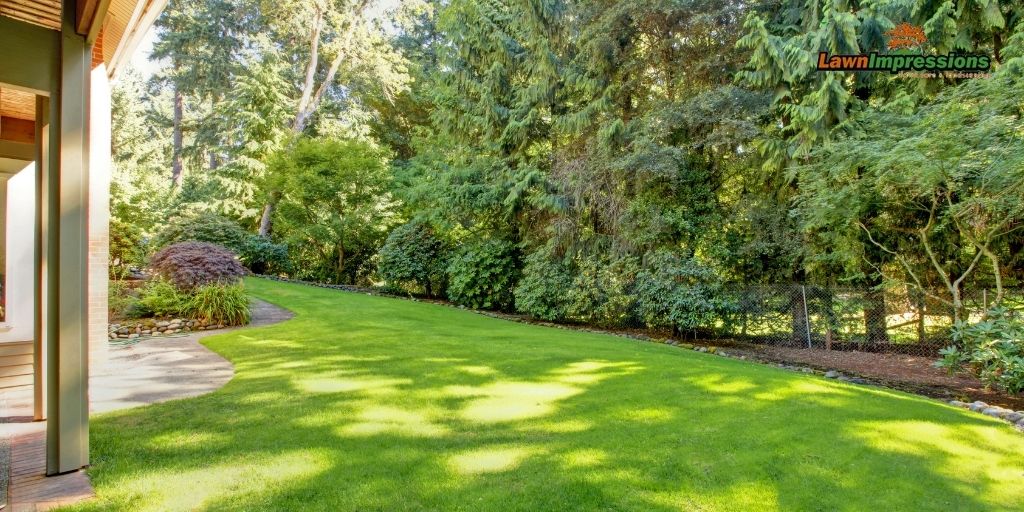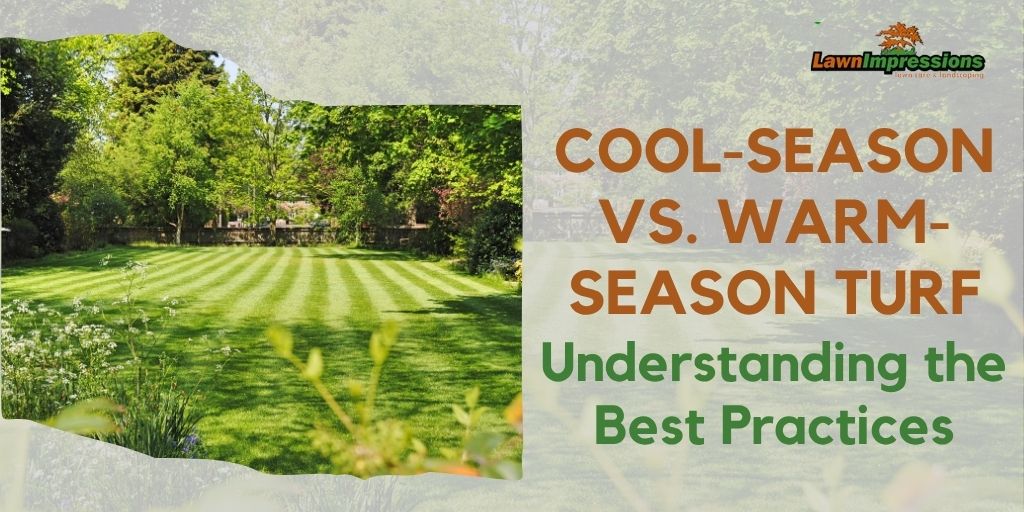Having a beautiful, healthy lawn all year round can be tricky if you don’t understand how different grass types grow and thrive. Many homeowners struggle to keep their lawns green through every season, especially when the weather changes drastically. The wrong turf type can lead to dull, patchy areas, wasted water, and endless frustration trying to make your grass look perfect.
That’s where understanding the difference between cool-season and warm-season turf becomes essential. By knowing when each grass type grows best, how to care for it, and which one suits your region, you can enjoy a lush lawn no matter the climate. This guide will walk you through the best practices for maintaining both cool-season and warm-season turf so you can confidently nurture a lawn that stays healthy, green, and vibrant all year long.
Table of Contents
- Key Differences Between Cool-Season and Warm-Season Turf
- Best Practices for Cool-Season Turf Maintenance
- Best Practices for Warm-Season Turf Maintenance
- Transitioning Between Turf Types
- Professional Tips for Year-Round Lawn Success
- Growing the Perfect Lawn for Every Season
- Quick FAQs About Best Practices for Cool-Season vs. Warm-Season Turf
Key Differences Between Cool-Season and Warm-Season Turf
Knowing how your turf responds to temperature, sunlight, and soil type is the foundation of effective lawn care. Cool-season and warm-season grasses have unique growth patterns that define their performance and maintenance needs. Understanding these differences ensures your lawn care efforts match your turf’s natural cycle, preventing overwatering, poor color, or thinning during off-seasons.
Each grass type thrives in different conditions. Cool-season grasses love mild climates with cooler nights, while warm-season grasses excel in hot, sunny regions. When you recognize which type suits your area, you’ll save time, money, and resources while maintaining a beautiful, resilient lawn.
🌱 Growth Patterns and Climate Adaptation
Cool-season turf grows best in spring and fall when temperatures range between 60–75°F. These grasses remain active longer during cooler weather and often struggle under extreme summer heat. Warm-season turf, however, thrives in temperatures between 80–95°F, slowing down or going dormant when cooler weather hits. The difference in growth cycles means that cool-season turf should be fertilized and aerated in fall, while warm-season grasses need attention in late spring or early summer.
🌾 Common Grass Varieties and Their Traits
Cool-season grasses include Kentucky bluegrass, tall fescue, and perennial ryegrass. These are ideal for northern climates and areas with cold winters. These varieties are known for their fine texture and rich color but require consistent watering. Warm-season grasses like Bermuda, Zoysia, and St. Augustine, on the other hand, prefers hot, sunny environments and are drought-tolerant once established. Each variety offers unique benefits. For instance, fescue lawns resist shade and grow fast, while Zoysia provides dense coverage and a luxurious feel underfoot. Choosing the right turf depends on your local climate, soil conditions, and desired look.
RELATED: Bermuda Grass VS Fescue Grass VS Zoysia Grass
🗺️ Regional Suitability and Transition Zones
In regions like North Carolina, where winters are cool but summers are warm, both grass types can thrive in what’s known as a “transition zone.” Homeowners often blend varieties to maintain year-round color and durability. Selecting a hybrid or mixing turf types ensures your lawn stays green even as the seasons shift. Working with a lawn professional helps you find the right balance for your area’s specific climate conditions and soil profile.
Best Practices for Cool-Season Turf Maintenance
Cool-season turf requires focused care during fall and spring to stay lush and healthy through temperature changes. These grasses benefit from consistent watering, balanced nutrition, and regular aeration. Since they’re sensitive to summer stress, proper mowing and disease prevention become key to year-round success.
Understanding the best care schedule for cool-season lawns can prevent browning and patchiness during warmer months. The right routine helps your grass recover faster after seasonal stress, ensuring it remains thick and vibrant.
RELATED: Spring Lawn Care Tips For NC and SC Homeowners
💦 Proper Mowing and Watering Techniques
Cool-season grasses should be mowed between 2.5–4 inches to protect their roots from heat damage. Mowing too short exposes the crown, while leaving it too long invites pests and mold. Consistent trimming keeps your turf even and healthy. When it comes to watering, early morning irrigation is best. Aim for deep, infrequent watering (about one inch per week) to encourage deeper root growth. Overwatering can cause fungus and root rot, while under-watering leads to dry, brittle grass.
RELATED: Watering Best Practices: How to Water Your Lawn Effectively

💧 Fertilization and Aeration Timing
Fall is the prime season for fertilizing cool-season turf. Applying a nitrogen-rich fertilizer before winter strengthens roots and improves color retention. Spring aeration enhances air and nutrient flow to the soil, helping the grass recover from cold stress. Avoid heavy fertilization during summer since it can burn the grass. Instead, focus on maintaining consistent soil moisture and light feeding. This schedule ensures your cool-season turf stays healthy without overstressing its growth cycle.
RELATED: Breathing Life into Your Lawn: The Spring Aeration Guide
🍂 Disease Prevention and Shade Management
Cool-season grasses are prone to fungal diseases such as brown patch and snow mold. To minimize these, improve air circulation and avoid watering late in the day. Proper mowing and aeration also reduce moisture buildup that fosters fungus. If parts of your lawn receive limited sunlight, choose shade-tolerant varieties like fine fescue. Pruning nearby trees or shrubs allows better light penetration, promoting fuller growth even in shaded spots.
Best Practices for Warm-Season Turf Maintenance
Warm-season turf thrives in full sun and tolerates drought better than its cool-season counterparts. Its dense, carpet-like growth offers durability, making it popular for southern lawns. However, it still requires consistent care during its growing season to stay healthy and pest-free.
Regular mowing, smart irrigation, and proactive pest management ensure your warm-season grass remains vibrant. These practices promote strong root systems and prevent discoloration, keeping your lawn lush even during the hottest months.
RELATED: Summer Lawn Care Tips For NC and SC Homeowners
🌤️ Soil Preparation and Spring Green-Up
Before your warm-season turf enters its active growth phase, prepare the soil by testing its pH and amending with compost or organic matter. A healthy base supports even color and robust growth. During spring green-up, lightly fertilize and mow high to encourage new shoots. Avoid heavy watering too early. Let the soil warm naturally for better results.
🚿 Irrigation and Drought Tolerance
Warm-season grasses are naturally drought-tolerant but still need deep, consistent watering. Choosing drought-tolerant species like Zoysia or Bermuda helps reduce your irrigation needs. Using smart irrigation systems and natural fertilizers minimizes chemical runoff and supports long-term soil health. These steps ensure that your lawn remains green while conserving water, aligning with eco-friendly maintenance goals.
Best practices include:
- Use deep, infrequent watering to strengthen roots.
- Install smart irrigation systems for even moisture distribution.
- Water early morning to reduce evaporation and fungal risks.
🐛 Pest and Weed Management
Common warm-season turf pests include mole crickets, chinch bugs, and armyworms. Prevent infestations by maintaining clean, aerated soil and applying preventive treatments early in the season. For weed control, use pre-emergent herbicides before growth starts in spring. Healthy turf naturally resists weed invasion, but staying vigilant ensures consistent lawn quality.
RELATED: Pre and Post Emergent Weed Control: Optimize Your Lawn’s Health This Spring
Transitioning Between Turf Types
For homeowners in areas with fluctuating temperatures, transitioning between cool- and warm-season turf can help maintain consistent color and texture. This balance reduces seasonal downtime when one turf type goes dormant.
By learning how to overseed, replace, and blend grasses effectively, you can enjoy a full, green lawn from January through December. The process requires timing, soil preparation, and ongoing adjustments as temperatures change.
🔁 When to Overseed or Replace
Overseeding cool-season turf in fall or warm-season turf in spring fills in bare patches and thickens growth. This process improves durability and keeps the lawn looking full even during seasonal transitions. If your turf consistently struggles, consider a full replacement with a species better suited to your region. A professional evaluation helps determine which blend ensures long-term success.
RELATED: Bare Spots in Lawn: Tips and Solutions to Restore a Healthy Yard
🌦️ Seasonal Care Adjustments
Transitioning lawns require flexible care schedules. Adjust mowing heights and watering routines depending on which grass is active. For example, raise mower blades slightly during cooler months to protect cool-season turf and lower them as warm-season growth begins. These small adjustments make a big difference in turf health, preventing over-stress and encouraging smoother seasonal transitions.
🎨 Balancing Color and Texture Year-Round
A mixed-turf lawn offers beauty and resilience but requires planning. Choose complementary varieties to balance color and texture. For instance, blending fescue with Bermuda grass ensures density and visual appeal across all seasons. Regular monitoring helps detect thinning or discoloration early. This allows for quick corrections and maintains a consistently vibrant appearance.

Professional Tips for Year-Round Lawn Success
A thriving lawn requires consistent care and expert attention. Whether you’re managing a cool-season or warm-season lawn, planning ahead each season ensures lasting results.
Regular checks, proper tools, and professional support keep your turf resilient against pests, weeds, and harsh weather, giving you the vibrant outdoor space you desire.
📅 Scheduling Seasonal Lawn Checks
Perform quarterly soil and turf assessments to catch issues early. This helps you adjust your maintenance schedule as seasons shift, keeping your lawn in peak condition. Scheduling professional inspections ensures balanced nutrition and consistent color all year long.
🧰 Choosing the Right Equipment and Tools
Investing in the right tools, such as sharp mower blades, proper aerators, and efficient irrigation systems, makes lawn care easier and more effective. Dull or incorrect tools can damage turf and slow growth. A well-maintained set of equipment not only saves time but also enhances your lawn’s overall health and appearance.
💰 Maintenance Costs and Labor
Evaluate your lifestyle and local weather patterns to find a turf that meets your goals without straining your budget.
- Warm-season turf: higher initial installation, lower water costs.
- Cool-season turf: lower installation, higher ongoing care.
- Hybrid approach: balances beauty, cost, and efficiency.
Growing the Perfect Lawn for Every Season
Understanding the best practices for cool-season vs. warm-season turf gives you the knowledge to create a thriving lawn year-round. With the right approach to watering, mowing, and soil care, you can maintain lush green grass no matter the temperature.
Choosing a grass type suited to your region ensures sustainability, cost-efficiency, and beauty. Whether you prefer cool-season color or warm-season durability, following these maintenance principles keeps your lawn healthy and inviting. Most importantly, consulting with local turf experts ensures your lawn remains healthy and adaptable, even as conditions change over time.
🌿 Begin Your Turf Transformation Today!
Working with Lawn Impressions will transform your lawn’s look and performance. We understand soil chemistry, local weather, and the exact needs of your turf type. For North Carolina homeowners, we offer customized turf care programs designed for the region’s unique conditions, ensuring your lawn thrives season after season.
👉 Contact us at 704-733-9699 or via our website for expert turf solutions that make your property shine in every season.
Because a beautiful lawn begins with the right foundation.
Our Services Include:
Quick FAQs About Best Practices for Cool-Season vs. Warm-Season Turf
1. What is the difference between cool-season vs. warm-season turf?
Cool-season turf grows best in cooler temperatures, usually in spring and fall, while warm-season turf thrives in hot, sunny climates. Cool-season grasses like fescue or Kentucky bluegrass stay green longer during mild weather, whereas warm-season grasses such as Bermuda or Zoysia peak in summer and may go dormant in winter.
2. Which turf type is best for North Carolina lawns?
North Carolina falls in a transition zone, which means both turf types can perform well. Many homeowners choose a hybrid approach, using cool-season turf for shaded or cooler areas and warm-season turf for sunny spaces, to maintain a healthy, green lawn all year long.
3. How do I keep my lawn healthy year-round?
To maintain a healthy lawn year-round, adjust your care routine based on your turf type and the season. These practices ensure your cool-season or warm-season turf stays lush, green, and beautiful no matter the weather.
- Mow at the proper height for your grass.
- Water deeply but infrequently.
- Fertilize and aerate at the right times.
- Work with local lawn care professionals for region-specific maintenance.
YOU’LL ALSO LIKE:

